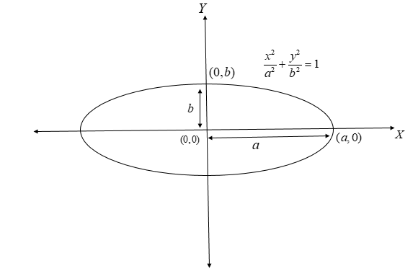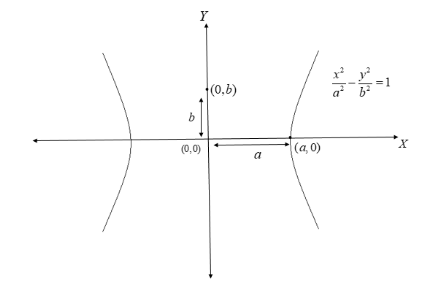Question
Question: If \( {e_1} \) and \( {e_2} \) are respectively the eccentricities of the ellipse \( \dfrac{{{x^2}}}...
If e1 and e2 are respectively the eccentricities of the ellipse 18x2+4y2=1 and the hyperbola 9x2−4y2=1 , then the relation between e1 and e2 is
(A) 3e12+e22=2
(B) e12+2e22=3
(C) 2e12+e22=3
(D) e12+3e22=2
Solution
Hint : We compare 18x2+4y2=1 with the equation of an ellipse a2x2+b2y2=1 to get the values of a and b and compute its eccentricity e1 using e1=1−a2b2 . Similarly, we compare 9x2−4y2=1 with the equation of hyperbola and find e2 using e2=1+a2b2 . Then, we need to substitute e1 and e2 in the LHS of each option to determine the correct relation.
Complete step-by-step answer :
We are given two equations: 18x2+4y2=1 and 9x2−4y2=1
Here 18x2+4y2=1 is the equation of an ellipse and 9x2−4y2=1 is the equation of a hyperbola
The eccentricities of these geometrical figures are denoted by the notation e1 and e2 respectively in the question.
We are asked to determine the relation between e1 and e2 .
Let us number the given equations as follows:
18x2+4y2=1......(1)
9x2−4y2=1.....(2)
The standard form of the equation of an ellipse with center at the origin (0,0) and major axis parallel to the X-axis is given by a2x2+b2y2=1
Where a,b are two real numbers and a>b

The eccentricity of this ellipse is given by the formula e1=1−a2b2
Therefore, from equation (1), we have a2=18 and b2=4
This implies that we get e1=1−184=1814
For a hyperbola centered at the origin (0,0) with transverse axis on the X-axis, the standard form of its equation is given bya2x2−b2y2=1

The eccentricity of this hyperbola is given by e2=1+a2b2
Therefore, from equation (2), we have a2=9 and b2=4 .
This implies that we get e2=1+94=913
Thus, we get e12=1814 and e22=913
On multiplying e12 by 2, we get 2e12=2×1814=914 .
Similarly, 3e12=614 , 2e22=926 , and 3e22=313
Let’s check each option:
A) 3e12+e22=2 ⇒3e12+e22=614+913=1842+26=1868=2
(B) e12+2e22=3 ⇒e12+2e22=1814+926=1814+52=1866=3
(C) 2e12+e22=3 ⇒2e12+e22=914+913=914+13=927=3
(D) e12+3e22=2 ⇒e12+3e22=1814+313=1814+78=1892=2
Hence 2e12+e22=3 is the correct answer.
So, the correct answer is “Option C”.
Note : 1) There are two axes in an ellipse: the major axis and the minor axis. They are nothing but the longest and the shortest diameters respectively of the ellipse.
2) The transverse axis of a hyperbola is the segment passing through its center with the vertices of hyperbola as its endpoints. Here, by vertices, we mean the points at which the curves of the hyperbola intersect the coordinate axis.
